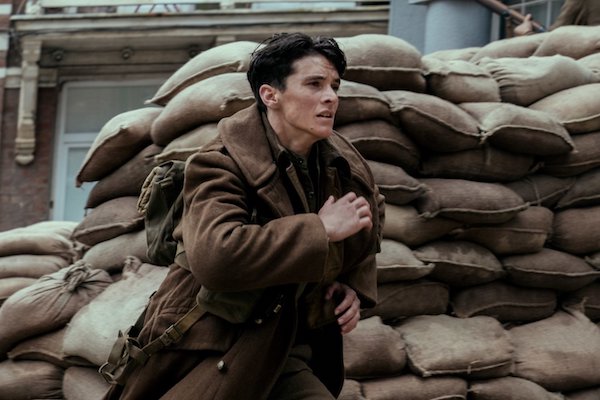
'Dunkirk' plunges into this legendary WWII evacuation
By Diane Carson
Writer/director Christopher Nolan has a glorious gift. Unfettered by conventional narrative structure, he hit my radar with his second feature film Memento (2000), a mind-boggling story told backwards with overlapping events. Nolan has followed with the exciting Dark Knight trilogy and the astonishing Inception. But he has saved his most brilliant brainchild for Dunkirk.
Dunkirk doesn't relate the story of the May 1940 evacuation of up to 300,000 Allied troops from this French beach area. It viscerally immerses us in it with an immediacy almost beyond comprehension. With a few lines of introductory titles setting the scene, the rest of the film is experienced with men on land, in the air, and on -- and in -- the sea. With his signature playing with unshackled time frames, titles announce: 1. The Mole, one week (the jetty at the beach); 2. The Sea, one day; and 3. The Air, one hour. Liberally crosscutting among these three settings and times, Lee Smith's editing keeps the action clear and crashing forward with unbridled momentum.
The only context we get, and it is sufficient, is a flyer that flutters down on the six soldiers walking through the town in the opening. Shot on location, with real Spitfires, battleships, and small boats, cinematographer Hoyte Van Hoytema captures evocative (and often painfully beautiful) compositions: the empty beach as one soldier walks into the waves, lines of soldiers waiting for help who are instead sitting ducks for German planes, men thrashing in the water and trapped in enclosed spaces, a lone Spitfire burning in defiance of the Nazis. My sole complaint is the overuse of Hans Zimmer's music.
The cast is superb. As Mr. Dawson, captain of one of the small civilian boats, the always exceptional Mark Rylance brings a steely resolve to his part in the rescue. Kenneth Branagh as Commander Bolton and James D'Arcy as Colonel Winnant speak volumes with reaction shots. Fionn Whitehead as young British soldier Tommy evokes empathy immediately and throughout an array of crises. And Tom Hardy as Farrier, piloting one of the British Spitfires, communicates his determination and decision for self-sacrifice with just his eyes, his face half covered by his radio mask.
In both standard and IMAX presentations, the latter the most powerful way to experience Dunkirk, at area cinemas.


